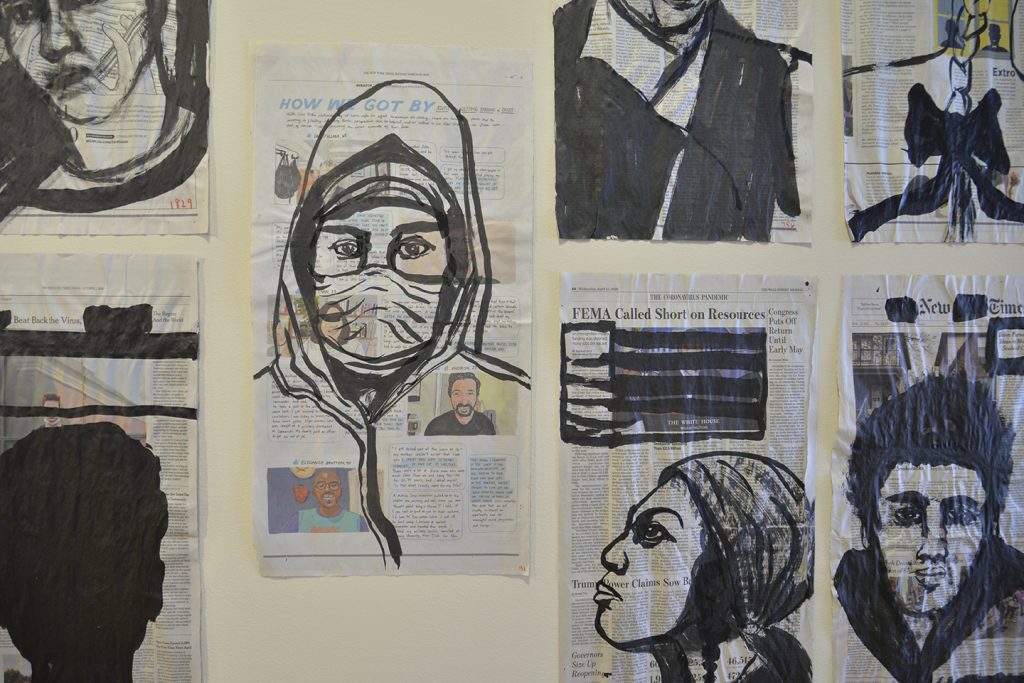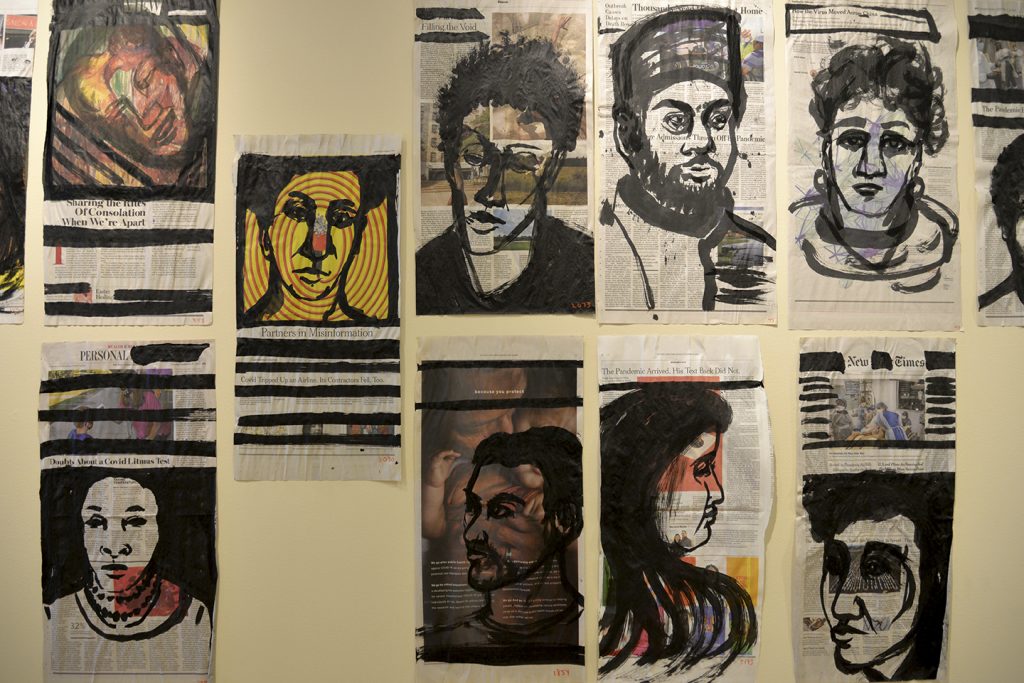Otterbein Exhibition “The Pandemic Portraits” Uses Art to Reflect on the Past Two Years
Posted Mar 01, 2022
By Madelyn Nelson ‘23
When the world came to an abrupt halt in March 2020, the events of the global pandemic were displayed on the front pages of newspapers every day. To help process the tremendous loss, Art Professor Emeritus Nicholas Hill used his craft and the daily newspapers to create The Pandemic Portraits. (A catalog of portraits is available for preorder here.)
“As the number of infections skyrocketed across the globe, I decided to explore a daily regimen, a response to the tragedies surrounding all of us,” said Hill.
Created solely on newsprint from The New York Times and The Wall Street Journal, The Pandemic Portraits are created with pandemic-related headlines located above the fold and painting inspired by photos accompanying the stories.
The newspapers are printed in black and white and in color and vary in content, including maps of job loss, remote learning, the introduction of masks, and the economic hardship due to the pandemic.
For each portrait, Hill finds a subject from the page, but not the obvious subject. The Pandemic Portraits focus on the smaller, often unnoticeable people and make them the central focus of the piece.

“To determine how to represent the faces behind the mind-numbing headlines, I scanned the daily editions of both papers for any photographs that included accidental subjects, the passers-by or people in the background, who were not the intended subjects of the news photos,” said Hill.
The Pandemic Portraits spotlight the smaller aspects of the pandemic and humanize the lives that have been lost every day since the pandemic began.
Perhaps most notably, each portrait took no more than five minutes to paint.
“As the pandemic took hold in the United States, an early news article stated that one American was dying every five minutes,” said Hill. “I used that statistic to guide my process. I limited myself to a maximum of five minutes for each portrait.”
Hill noted that many portraits were done in two or three minutes, but the five-minute time limit remained for all portraits.
The portraits bring a human face to the headlines that lived in the spotlight for months. They demonstrate real people with real families and jobs whose lives were lost because of the events in the headlines.
“It seemed fitting to use unknown, but specific people as the subjects of the pandemic portraits,” said Hill. “Like the actual victims of the disease, the “found” photographs were of individuals, people with families and friends. If they were to die, they would be mourned.”

Each portrait uses only a bamboo brush to apply black ink onto newsprint.
“I have used sixteen quarts of India ink, and I have worn out four bamboo brushes,” said Hill. “From the beginning, I have numbered each drawing, using a red, lead pencil. Three new pencils have been sharpened and resharpened to nubs.”
By January 2022, Hill had created more than 4,500 Pandemic Portraits.
“The effect of The Pandemic Portraits on me has been one of on-going reflection on the pandemic and its consequences on individual lives,” said Hill. “I hope that the drawings offer the opportunity for viewers to pause and reflect upon their own experiences over the past two years.”
The Pandemic Portraits were displayed on campus in spring 2021. A catalog containing 105 Pandemic Portraits was designed by Jacob Strous ’18 and includes a reflective essay by Otterbein’s Director of The Frank Museum of Art & Galleries Janice Glowski and a commemorative poem by emeritus professor of English Terry Hermsen. The catalog has been shortlisted for the Alfred H. Barr Jr. Award for Smaller Museums, Libraries, Collections, and Exhibitions (2023). Order a copy of the catalog here.